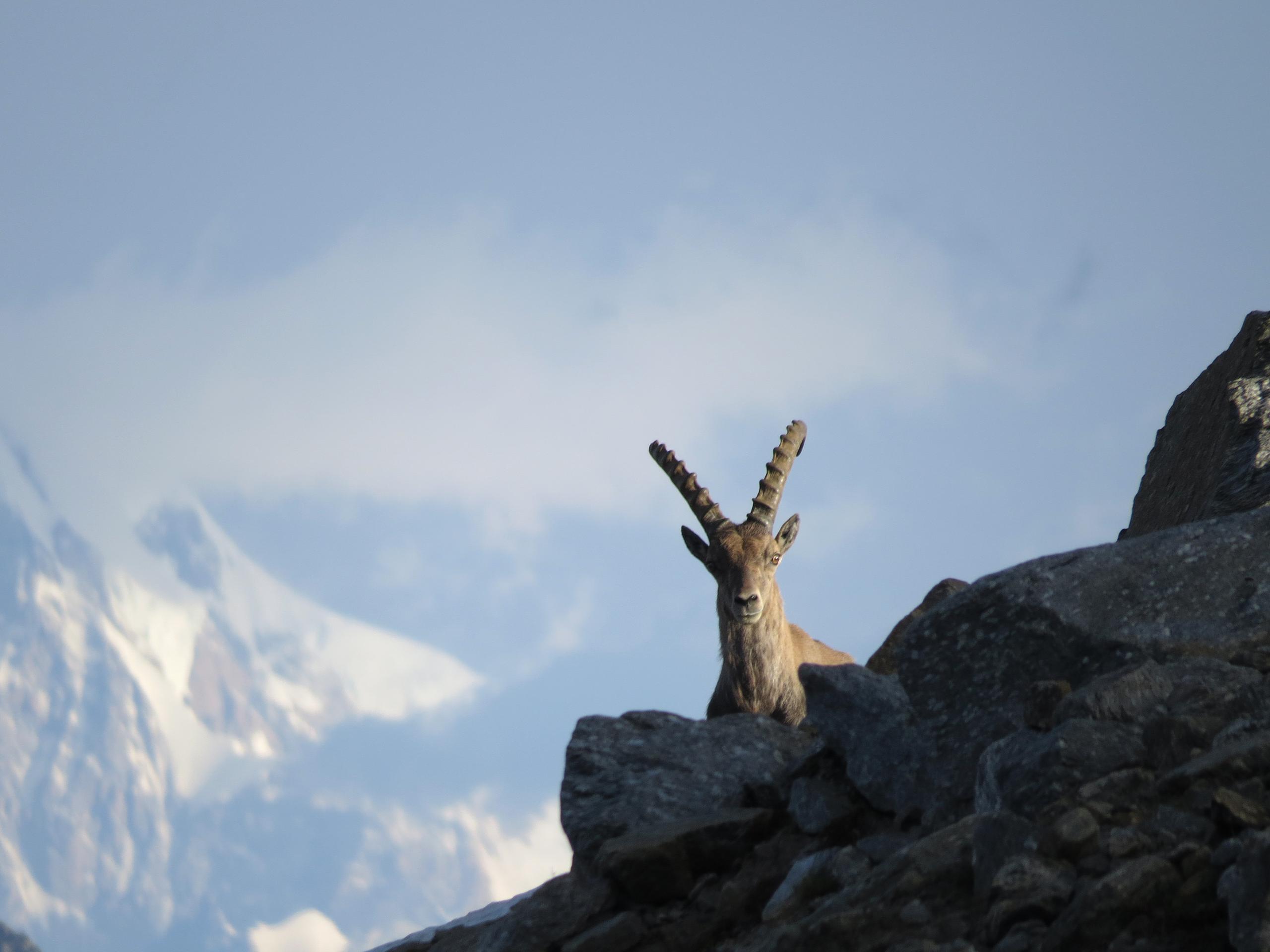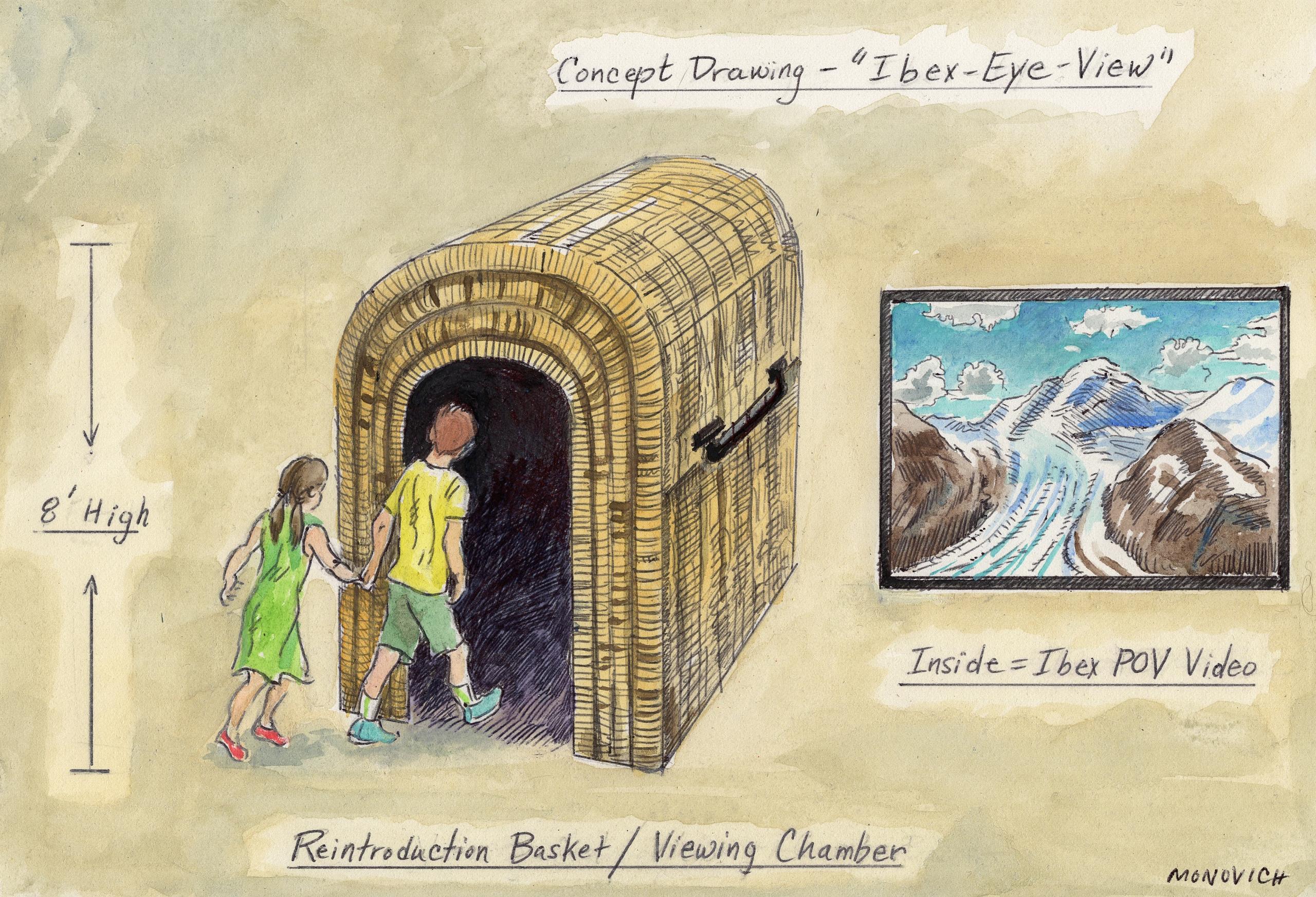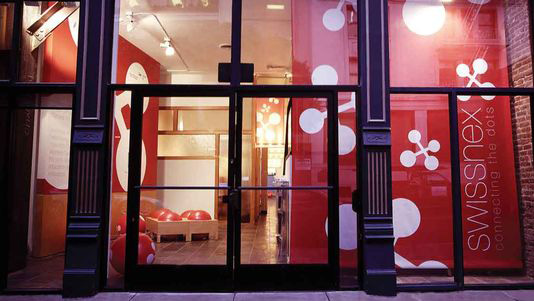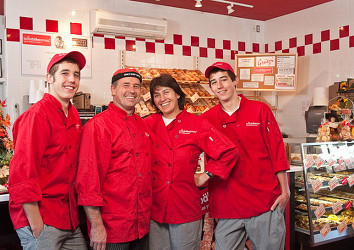Exploring the art and science of Alpine ibex

A Swiss-American team is sparking interest in Alpine ibex and their habitat. The ‘Footprint’ project aims to educate and inspire through fine art cross-bred with scientific research.
Animals are a recurring theme in the work of Boston artist Edward MonovichExternal link, who earned a degree in biology before pursuing one in fine arts. His current muse? The Alpine ibex.
“Watching them in the wild, I really wanted to know more about them,” says Monovich, who took a summer sabbatical in Switzerland a couple of years ago. A professor at the Massachusetts College of Art and Design, he decided to read up on the sturdy mountain dweller. While poring over scientific journals, Monovich came across “Footprint”, a paper by Lukas KellerExternal link, a professor at the University of Zurich’s Institute of Evolutionary Biology.
“This one study – which started out asking about the current genetic fitness of the ibex – ended up telling a cultural and physical story of the geography of Switzerland,” Monovich tells swissinfo.ch. “To me, a good artwork works that way; it functions on many levels.”
So he got in touch with Keller and initiated an art-science collaborative project. Keller describes Monovich as an ideal partner thanks to his biology background.
“He understands what we write – our scientific papers aren’t gibberish to him,” says Keller, who is studying ibex throughout the European Alps – in particular, how near-extinction as well as re-introduction has affected their genetic composition.
So-called bottlenecks have been a challenge for Alpine ibex. These occur when a population becomes very small – causing a loss of genetic diversity, which can then have a negative impact on a population’s well-being.
“Most populations in the Alps are growing well, and there’s no immediate need to do anything about it. But some aren’t, so those are populations where one might consider releasing animals from a different genetic background,” says Keller, who advises the Swiss government on the subject.
Ibex in Switzerland
Ibex became extinct in the Swiss Alps in the first half of the 19th century. In 1906, the Swiss authorities hired poachers to cross the border into Italy and capture a number of kids.
A successful breeding programme made it possible to start the Augstmatthorn colony in the Bernese Oberland. Later, Italian Prime Minister Benito Mussolini gave Switzerland additional animals.
Today, about 17,000 ibex live in Switzerland; throughout the Alps there are about 40,000.
From paper to project
Monovich and Keller are now working on a multimedia installation showcasing the scientific research through video, photography, painting and sculpture. It will be on view in Switzerland and the United States in 2017/18.
The Boston branch of swissnexExternal link – the Swiss science and innovation network – has agreed to fund the research phase. This made it possible for Monovich to visit Keller’s lab in Zurich as well as the Alpine Wildlife Research CenterExternal link in Italy’s Gran Paradiso National Park, once the home of the world’s only surviving Alpine ibex population.
In September, swissnex Boston hosted an event where the two men could present their initial concepts for the “Footprint” project while soliciting feedbackExternal link from the audience.
“That gave me and Edward [Monovich] the chance to think more deeply. He has a very interactive style – he actually lets people draw on his paintings. It was very exciting,” Keller recalls.
In fact, what the artist does is coat his works in shellac so that people can add their own touches with dry erase markers. It’s a method he refers to as “graffiti collaboration”.
“In the one I unveiled at swissnex, I painted the ibex and left the background fairly empty. Then I asked participants to ponder the environment of the ibex, so in a way I was asking them to become ecologists,” explains Monovich. Here’s an example:

Another installation concept is also quite interactive. It will involve an eight-foot-high basket like those used over a century ago to carry the ibex from captivity into the wild. While researching the reintroduction of the species to Switzerland, Monovich was struck by how gently the animals were released into the wild.
“The rangers carried them in these beautiful handwoven baskets. Based on the kind of performance and ritual of releasing them, it was obvious how important that relationship was to the humans helping this animal return,” Monovich says.
The idea is that visitors will walk into the basket and watch a video filmed from the point of view of an ibex.

Like those ibex, Monovich will find himself in the Swiss Alps again in spring 2016.
“Lukas [Keller] has offered to take me into the field for some biopsy darting. I’m interested in learning the whole process, from collecting samples to analysing them in the lab, and then communicating the data and findings in the end,” Monovich says.
For Keller, there’s also plenty to discover thanks to some new genomics tools that allow scientists to go into much more detail in terms of genetic history and the consequences of bottlenecks.
“I have two PhD students and one post-doc working on ibex – I’ve never had that many people doing research on them, so it’s really exciting at the moment because we have all these new techniques that allow us to study the whole genome of these animals, and to look at things that we couldn’t before,” Keller says.
Big picture
Keller, who also runs the Zoological MuseumExternal link at the University of Zurich, cares especially about the long-term preservation of nature. He thinks the Footprint project could be a means towards that end.
“I’m very curious to learn how we can communicate science through art. That may be a way that we can get more people with an artistic interest interested in nature,” Keller says.
Other ideas for the installation range from the traditional, like a wooden ibex mask in the Lötschental style, and the modern, like a 3D print of ibex horns. The artist is also doing portraits of the researchers’ favourite animals living in Gran Paradiso.
“They were thrilled about this idea, and it’s funny because I think it reveals this deep non-scientific connection that they have. I’m interested in exploring that place where the two fields meet,” Monovich says.
Keller finds that the two fields have more in common than not.
“We tend, sometimes, to naively think of science and arts to be such opposites, but they’re not. We look at things differently, and that’s the really exciting bit. Both artists and scientists look for new challenges all the time, and that’s one thing that brings us together.”

In compliance with the JTI standards
More: SWI swissinfo.ch certified by the Journalism Trust Initiative













You can find an overview of ongoing debates with our journalists here . Please join us!
If you want to start a conversation about a topic raised in this article or want to report factual errors, email us at english@swissinfo.ch.